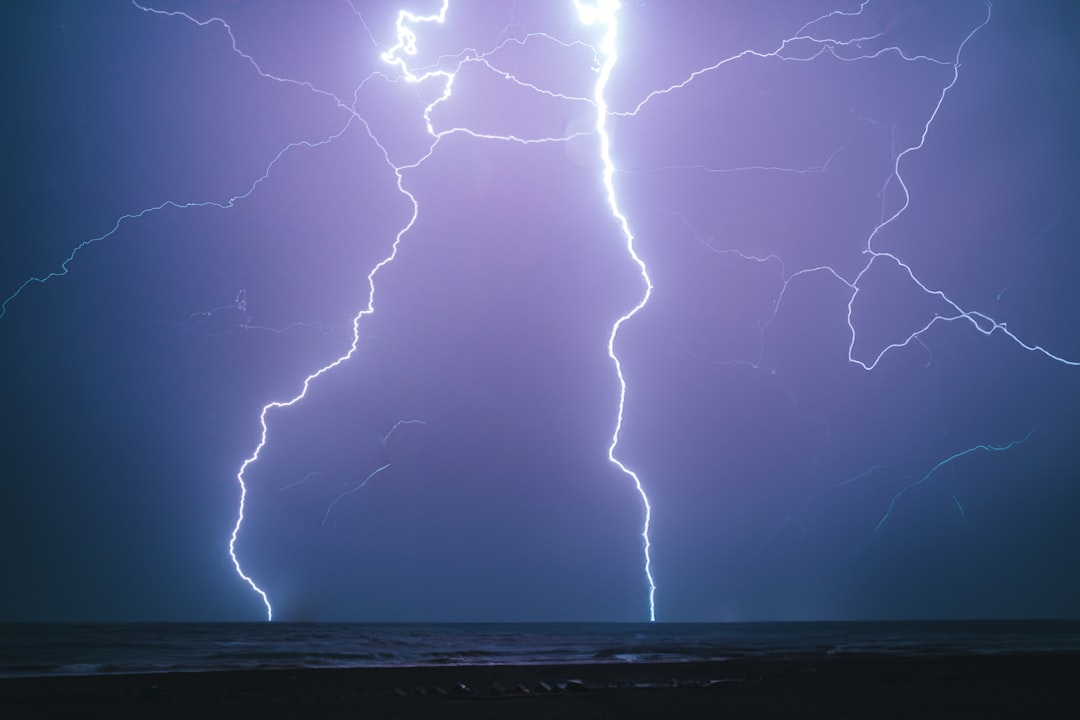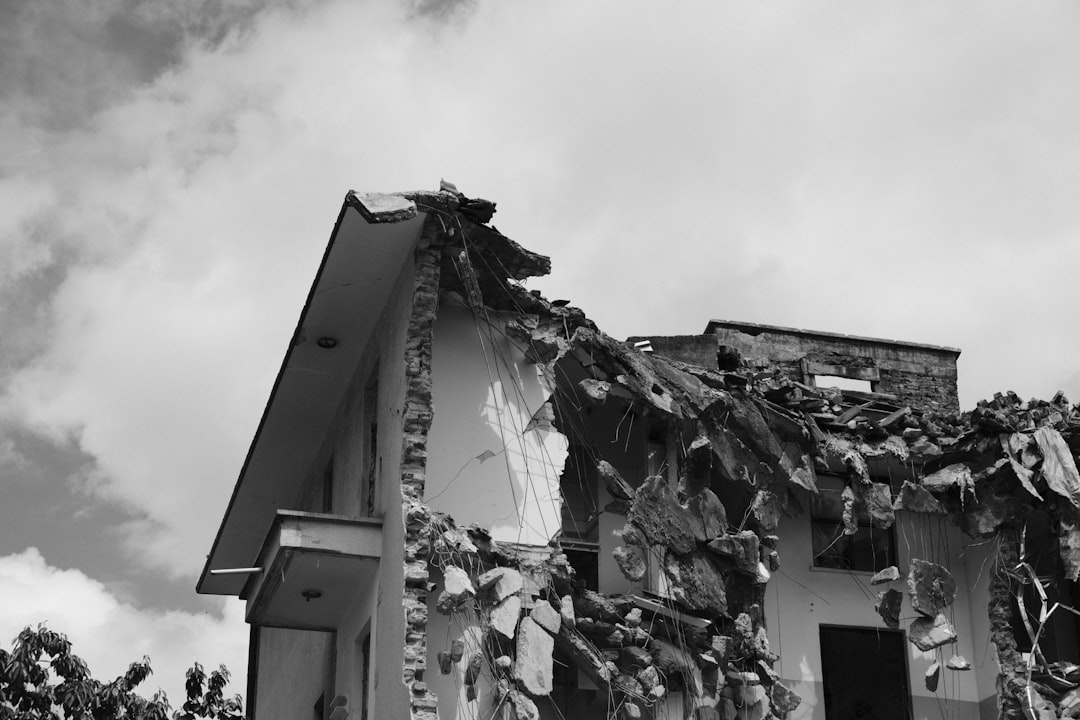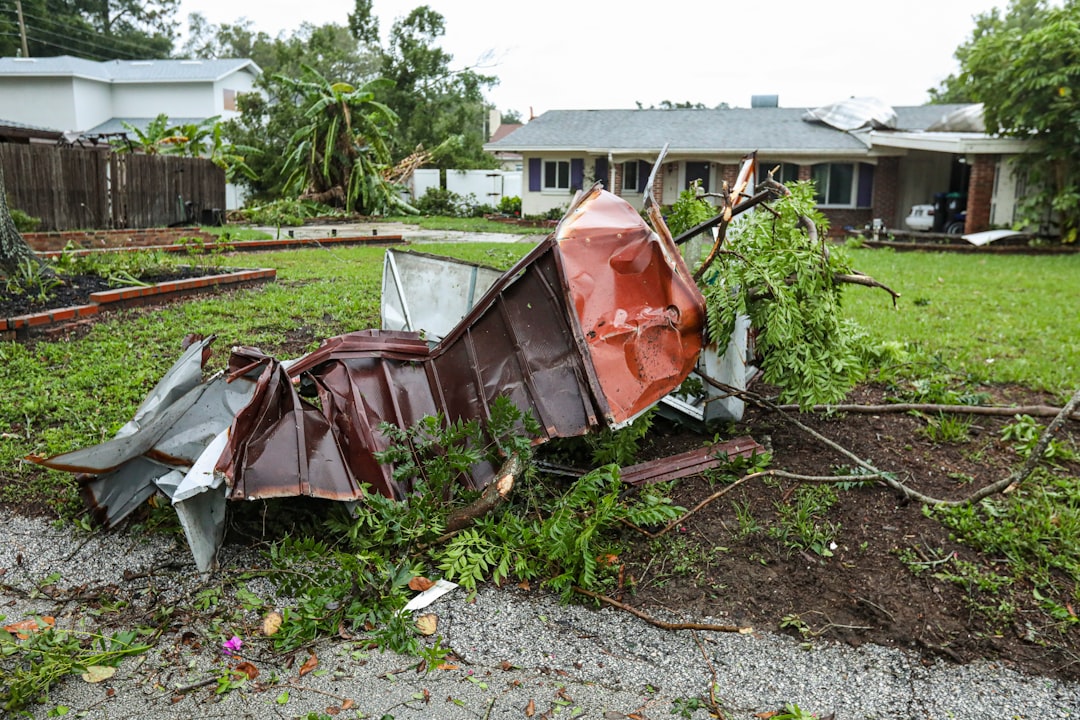

Engage prospects with a scan and streamline customer engagement with FREE QR code marketing tools by Sona – no strings attached!
Create a Free QR CodeFree consultation

No commitment

Engage prospects with a scan and streamline customer engagement with FREE QR code marketing tools by Sona – no strings attached!
Create a Free QR CodeFree consultation

No commitment
Storm damage repair services operate in a fast-paced, urgency-driven environment where timing and trust are critical for both emergency response and revenue growth. In the wake of severe weather events, potential customers are inundated with information, marketing noise, and an immediate need for reliable solutions. The challenge is standing out quickly, building credibility, and simplifying the path from physical touchpoints such as yard signs, door hangers, or repair crews on the street, to actionable digital engagement.
Many teams struggle to convert these fleeting in-person impressions into actual pipeline, often missing out on high-value prospects who never reach the CRM or remain anonymous after an initial glance at offline materials. In these moments, valuable opportunities slip through the cracks, and the ability to act swiftly on genuine intent becomes just as important as traditional craftsmanship.
Today, QR codes are emerging as a vital bridge for storm damage repair services marketing teams, offering an instant, intuitive way for homeowners and property managers to connect with repair experts, submit insurance claims, or view reviews without the friction of app downloads or lengthy forms. Unlike static forms or one-directional handouts, QR codes power measurable engagement, capturing essential first-party data at the exact moment when urgency is highest.

While traditional canvassing and print campaigns remain staples after a storm, repair services are finding that these analog channels often miss high-value prospects. Many homeowners notice your signage, flyers, or crew but hesitate to fill out a lengthy form, call in, or disclose contact details. Potential leads disappear into anonymity, leaving no trace in your CRM and reducing the pool of timely, actionable opportunities.
QR codes bridge that gap by attaching a fast digital action to every offline impression. Instead of relying on paper forms or voicemails, you can give prospects a one-tap path to schedule, initiate a claim, or request a free inspection. When every scan flows into your CRM with context like location and timestamp, your team can prioritize urgent inquiries and respond faster than competitors.
A robust platform like Sona QR centralizes scan data and integrates it with your attribution and CRM tools. You can import leads in real time, enrich profiles, and align follow-up with urgency, which is essential when storm conditions and customer needs are changing hour by hour.

The urgency and locality of storm damage repair makes timing and visibility paramount, but these same dynamics often lead to frustration when meaningful traffic remains impossible to identify or act on. Frequently, potential customers interact with your brand in fleeting, non-digital ways: walking past a yard sign, handling a door hanger, or watching your crew work. Without a clear digital bridge, many of these moments end before they begin.
QR codes give that offline attention a frictionless next step that converts intent into action and data. One scan can move someone from curiosity to a booked inspection in under a minute, while also feeding your systems with high-fidelity signals you can measure and optimize. This is especially important after severe weather events; see roofing leads after a storm for more context.
Some of the key challenges repair businesses face include:
Advanced QR technology addresses these hurdles by:
Every yard sign, truck decal, appointment card, and job-site poster becomes a measurable entry point for customer engagement and operational efficiency.

Using a single QR format for every scenario limits outcomes. Homeowners and property managers have different needs, urgency, and device preferences, and your crews have unique workflows. A mix of formats can deliver smoother experiences and richer data.
For storm damage repair services, the most useful QR formats include:
Wherever flexibility matters, dynamic QR codes are the better choice. They let you update destinations, swap promotions, and A/B test pages without reprinting. Sona QR supports all of these formats and centralizes management so even large field teams can stay consistent and compliant.

Growth hinges on turning everyday surfaces into conversion points. After a storm, homeowners are walking dogs, surveying damage, and driving past active job sites. If your outreach lacks a scan-and-go path, you are missing peak-intent moments that competitors may capture.
Start by mapping where your brand is already visible and attach clear, benefit-driven QR experiences to those touchpoints. Then, use the data to refine placements and messaging in real time.
By aligning your QR deployment to the post-storm journey, you capture intent in the wild, reduce reliance on cold calls, and learn which neighborhoods and placements are most profitable.

In practice, QR codes streamline high-friction moments where opportunities slip away due to manual processes or incomplete data. The best use cases are fast to understand, easy to act on, and valuable enough that homeowners feel scanning is worthwhile.
These use cases not only secure immediate business but also feed deeper account profiles and audience segments. In Sona QR, each scan can trigger tags such as “emergency,” “claims,” or “estimate” so your messaging stays relevant from first touch to final inspection.
Each QR scan is a behavioral signal that says what a person needs and how urgently they need it. If you deploy unique codes across materials and locations, you can segment audiences automatically and nurture them with greater relevance and empathy.
Start by defining a few core audience distinctions in storm repair. For example, a homeowner with an active roof leak has very different needs than a property manager researching vendors for multiple buildings. QR tags help you separate these journeys in real time.
With Sona QR, segments are created automatically based on the code scanned, the landing page visited, and the actions taken afterward. Your teams can then prioritize outreach that fits the customer’s context, not guesswork.
QR codes are the connective tissue between street-level visibility and digital outcomes. They make your print, vehicle branding, and event efforts measurable while informing your digital channels about what is happening on the ground. When these channels work together, you reduce waste, improve speed to lead, and build a repeatable growth engine.
Plan for coverage across the channels you already use and align the destination experience with the context of the scan. For example, a yard sign should open a short mobile booking flow, while a direct mail insert can include a video walkthrough for claim steps.
QR codes serve as the offline onramp to your digital marketing engine. With a centralized platform like Sona QR, you can manage all your codes, monitor performance by channel and neighborhood, and sync scan data with your CRM and ad platforms for closed-loop attribution. See the offline attribution guide for strategy and measurement fundamentals.
Turning the ideas above into a repeatable program requires a simple, disciplined process. The following checklist ensures you define your goal, pick the right QR format, design for real-world conditions, and optimize based on live data. You will avoid the common pitfalls that lead to stale campaigns or lost leads and build a machine that improves after every storm.
Run this cycle on a weekly cadence during storm season, then archive learnings in playbooks for faster deployment after the next event. The goal is to shorten launch time, improve conversion with each iteration, and keep your brand top of mind when urgency spikes.
Visibility over lead journeys is a recurring challenge for storm damage repair teams, especially when campaigns rely on disparate systems or static, untrackable QR codes. This results in blind spots around which actions, moments, or team members contribute most to revenue. With a unified analytics layer, you can see how every scan moves through booking, claim, and job completion. Sona is an AI-powered marketing platform that turns first-party data into revenue through automated attribution, data activation, and workflow orchestration. It identifies and enriches website visitors, scores accounts by intent, and syncs audiences in real time across ad platforms and CRMs. By unifying attribution with activation, Sona ensures every marketing touchpoint is measured, connected, and acted on, helping teams capture demand, optimize spend, and scale pipeline with precision.
Modern tracking makes it possible to translate scans into revenue with line-of-sight from first touch to invoice. It also equips teams to make decisions in the field, like moving crews to neighborhoods where scans surge or extending hours when after-work engagement spikes.
Sona QR captures real-world engagement, while Sona.com connects that engagement to pipeline and revenue with identity resolution and multi-touch attribution. You can unify fragmented touchpoints across buying stages, linking QR scans with website visits, ad interactions, email engagement, and CRM activities to build a complete picture of progression from first touch to purchase readiness.
Common points of failure in QR adoption include static codes that cannot be updated post-distribution, unclear CTAs, and lack of training for field staff. Without integrated analytics, teams cannot tell which channels work, and budget goes to placements that look good but do not convert.
A few best practices will raise scan rates and return on investment, while building habits that make each storm response smoother than the last. Prioritize tips that match your most-used media and the actions you need customers to take immediately.
Creative deployment ideas work well in this vertical. Add QR codes to tarps left on emergency jobs that say “Scan for your permanent repair appointment.” Include a QR on invoices that routes to financing options or deductible calculators, reducing friction at the point of decision. For more demand-gen context, explore these roofing marketing tactics.
Missed leads, slow claims initiation, and incomplete data impact every storm repair business. While exact numbers vary, teams consistently see performance lifts when they attach QR codes to high-intent moments. The following examples illustrate how QR-first thinking turns overlooked interactions into revenue and insight.
These examples prove a consistent theme: when QR codes are targeted and integrated, they reduce churn, expand upsell opportunities, and ensure that every offline moment has a measurable digital outcome.
Repair teams often encounter the same stumbling blocks when starting with QR: small or low-contrast codes that do not scan easily, landing pages that are not mobile-optimized, or codes that lead to generic homepages instead of the next best action. Avoiding these pitfalls can lift conversion quickly.
Pair these expert moves with ongoing benchmarking, and make QR management a normal part of your post-storm playbook. Treat each campaign as a source of learning that informs the next deployment.
Proactive optimization and a willingness to iterate keep your QR program aligned with customer needs and local conditions. The result is a system that gets stronger with every deployment.
Storm damage repair services face pressure to capture and convert high-intent leads, yet traditional outreach methods often fall short, losing visibility over crucial engagement signals or failing to identify high-value prospects in time. QR codes deliver a flexible and data-driven answer, empowering businesses to bridge offline attention with measurable online actions and rich customer profiles. By integrating QR-powered touchpoints across field, print, and digital channels, teams dramatically reduce lead loss, gain real-time insight into prospect behavior, and streamline personalization for outreach, claims, or upsell moments.
Sona QR and Sona.com give storm repair teams the tools to manage this end to end. Generate dynamic codes, route scans to the right destinations, track performance by neighborhood and channel, and connect those actions to pipeline and revenue with attribution. Start by equipping your crews and materials with clear, benefit-driven QR CTAs, then measure, iterate, and scale. When every scan becomes an entry point to service and insight, you serve communities faster, build stronger reputations, and open new avenues for growth. Start creating QR codes for free.
QR codes have revolutionized storm damage repair services by transforming how providers connect with clients and streamline operations. From accelerating customer acquisition to enhancing communication and providing instant access to critical repair information, QR codes eliminate delays and confusion, ensuring faster, more efficient service delivery. Imagine a homeowner scanning a code to instantly access repair status, safety tips, or emergency contacts—boosting trust and satisfaction at every step.
With Sona QR, you can easily create dynamic, trackable QR codes tailored to your storm damage workflows. Update information instantly without costly reprints, monitor scan data to optimize outreach, and link every interaction directly to improved service outcomes. No missed opportunities—just smarter, faster, and more transparent repair processes.
Start for free with Sona QR today and turn every scan into a seamless connection that drives customer satisfaction and business growth in storm damage repair services.
Use a mix of offline touchpoints such as yard signs, door hangers, and vehicle wraps combined with digital engagement through QR codes that link to booking pages, claim submission forms, and resource hubs to capture leads quickly and build trust.
Incorporate dynamic QR codes in your offline materials to drive instant digital actions, integrate scan data with your CRM and ad platforms for targeted follow-up, use location and role-based audience segmentation, and optimize campaigns based on real-time analytics.
Deploy QR codes on high-visibility assets like yard signs, crew uniforms, vehicles, door hangers, and local community boards to provide immediate next steps for homeowners and property managers while tracking engagement to refine placements and messaging.
Use QR codes for emergency service scheduling, insurance claim initiation with photo uploads, saving contact details via vCards, pre-filled SMS requests, directing to financing options on invoices, and sharing safety and resource hubs at relief centers or events.
Attach unique, dynamic QR codes to offline materials distributed in affected neighborhoods, train crews to promote scanning benefits, automate timely follow-up triggered by scans, and use scan data to prioritize urgent inquiries and optimize resource allocation.
Use Sona QR's trackable codes to improve customer acquisition and engagement today.
Create Your FREE Trackable QR Code in SecondsJoin results-focused teams combining Sona Platform automation with advanced Google Ads strategies to scale lead generation

Connect your existing CRM

Free Account Enrichment

No setup fees
No commitment required

Free consultation

Get a custom Google Ads roadmap for your business






Launch campaigns that generate qualified leads in 30 days or less.
